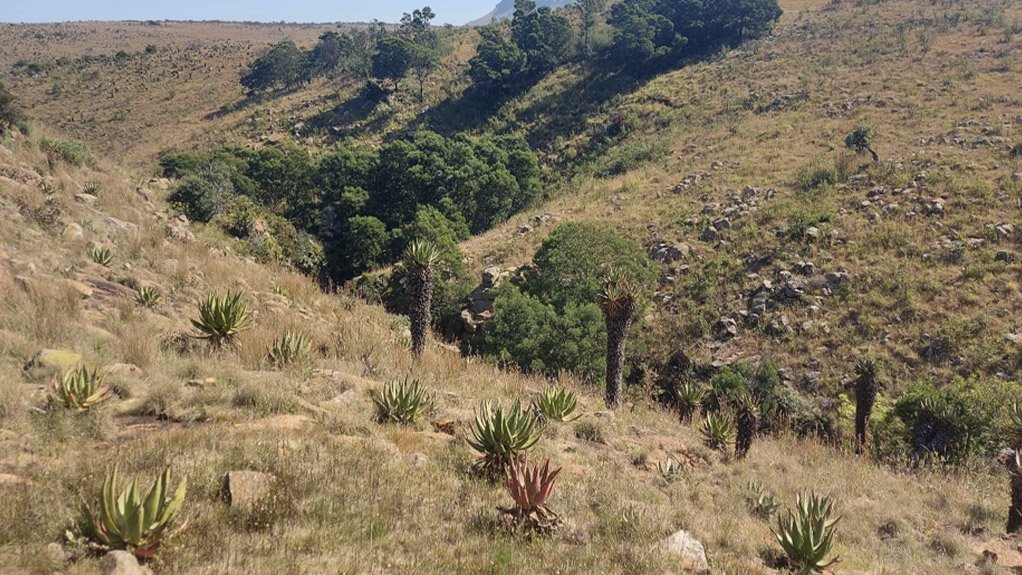
(Virtual Showroom): The overall decline in the natural biodiversity within South Africa and globally has been in steady decline over the past two (2) centuries as a direct and indirect consequence of the growth of the human population and unsustainable management of anthropogenic activities. In order to conserve and improve the natural biodiversity within our nation drastic steps need to be taken at national, provincial and local site levels.
A growing awareness of the implications of the loss of biodiversity resulted in the establishment of the Convention on Biological Diversity (CBD) at the 1992 United Nations Environmental Programme (UNEP) Earth Summit. Since its inception over 196 countries, including South Africa, have or are in the process of ratifying the Convention making the biodiversity of biological resources a key priority to eventually achieving sustainable development on an international scale.
The CBD defines biodiversity as “The variability among living organisms from all sources including, inter alia terrestrial, marine and other aquatic ecosystems and the ecological complexes of which they are part; this includes diversity within species, between species and of ecosystems” (CBD Art. 2). This definition has been adopted in national legislation, including the National Environmental Management: Biodiversity Act (NEM:BA) (Act no. 10 of 2004). The three (3) main objectives of the CBD are:
- The conservation of biological diversity
- The sustainable use of the components of biological diversity
- The fair and equitable sharing of the benefits arising out of the utilisation of genetic resources
In addition to being a signatory of the CBD, South Africa identified biodiversity as one of the five (5) key sustainable development issues within the country at the 2002 Johannesburg World Summit on Sustainable Development and committed to significantly reducing the rate of biodiversity loss nationwide. South Africa is also committed to achieving the seventeen (17) United Nations (UN) Sustainable Development Goals.
The combination of the aforementioned commitments places biodiversity and the sustainable use thereof firmly within the framework of operations and development within the country. In response to our responsibility as a nation, the National Biodiversity Strategy and Action Plan (NBSAP) (Department of Environmental Affairs (DEA), 2015) was developed to set out a framework and plan of action for the conservation and sustainable use of South Africa’s biological diversity and equitably sharing of benefits they provide (DEA, 2015). It is this broader NBSAP that sets the foundation from which site-specific Biodiversity Management and Action Plans (BMAPs) are to be developed to protect genetic, species and ecosystem diversity at a finer scale.
Greater attention is given to how a company approaches its development and operation within its surrounding natural environment, with specific focus placed on how sustainable its activities are in terms of maintaining biodiversity. The focus placed on biodiversity as a primary sustainable development challenge makes it a key topic that may contribute to the downfall or upliftment of a company’s value within the market.
This is more so relevant to potentially higher impact companies and associated activities such as entities within the mining sector. Addressing biodiversity issues therefore provides numerous opportunities such as, but not limited to ensuring sustainable growth, improving the working environment, attracting investors, securing licence to operate, bolstering stakeholder relationships and appealing to ethical customers. Understanding and subsequently managing the biodiversity within your operational footprint is becoming essential within the current market climate.
One such way of managing and monitoring changes to the biodiversity at a specific site level is through the development and implementation of a BMAP. The purpose of a BMAP is to guide the different phases of an activity (from planning, construction, operation, decommissioning, rehabilitation to closure) to ensure long-term survival of the ecosystems in which it occurs. At the same time, a BMAP is essentially utilised as a means of monitoring compliance of an activity against relevant licenses, permits and internal policies associated with biodiversity.
In addition to the natural factors considered, a strong emphasis should be placed on the anthropogenic (social) factors linked to the activity to align stakeholder expectations with the works within the receiving environment. The Norms and Standards for Biodiversity Management Plans for Ecosystems (DEA, 2014) were drafted to guide the development of BMAPs within ecosystems, specifically those that are threatened or protected. The following key principles as stipulated within the norms and standards can be utilised as a broad guide to the development of a site-specific BMAP (DEA, 2014):
- Clear biodiversity objectives
- Integrated management of the terrestrial and aquatic environment
- Adaptive management approach
- Use of best available science
- Keep it simple
- No recipe
- Stakeholder engagement and enhanced collaboration
- Voluntary participation
Utilising the above principles and content of the Norms and Standard (DEA, 2014) the components of a site-specific BMAP should typically include, inter alia:
- Introduction to the site locality within the receiving environment and operational activities
- Long, medium and short-term goals and objectives
- Baseline conditions (specialist input required)
- Presentation of sensitive/no-go areas and activities to be avoided
- Results of stakeholder engagement with specific focus on expectations linked to biodiversity
- Assessment of risks to biodiversity posed by the activity
- Management and action plan linked to legal responsibilities (licenses, permits and policies), risks identified as well as goals and objectives
- Monitoring programme linked to management and action plan
The site-specific BMAP should ideally be updated annually to ensure that the goals and objectives, management and actions required to align with the current phase and associated activities. Biodiversity conservation and management is undoubtedly a challenge, however by implementing best science and sourcing input from suitably qualified specialists the overall value of a site to a company and the receiving environment can be improved or maintained.